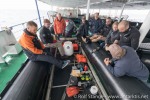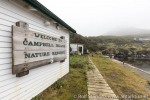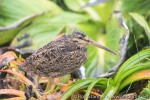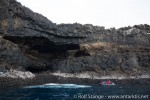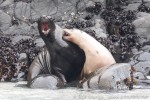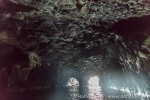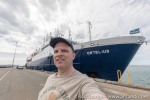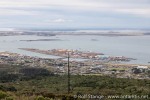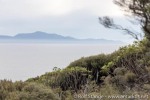Seitenstruktur
-
Spitsbergen-News
- Select Month
- March 2020
- February 2020
- March 2019
- January 2019
- December 2018
- September 2018
- June 2018
- May 2018
- April 2018
- March 2018
- February 2018
- January 2018
- December 2017
- November 2017
- October 2017
- September 2017
- June 2017
- May 2017
- April 2017
- March 2017
- February 2017
- January 2017
- December 2016
- September 2015
- April 2015
- March 2015
- February 2015
- January 2015
- December 2014
- October 2014
- August 2014
- June 2014
- May 2014
- April 2014
- March 2014
- November 2009
- April 2000
- Select Month

| Grytviken |
Home →
Yearly Archives: 2020 − News & Stories
At sea – 20th-22nd February 2020
Sat
22 Feb
2020
Three days at sea separate Campbell Island from the Balleny Islands – when things are going well. They do go well. The sea is calm and we are making good progress. The albatrosses are getting fewer and fewer, the first icebergs appear on the horizon. We are getting on with our vast series of lectures and start preparations for Antarctica. Here we are testing the emergency tent and check safety equipment.
- gallery anchor link: #gallery_272
Click on thumbnail to open an enlarged version of the specific photo.
Campbell Island – 19th February 2020
Wed
19 Feb
2020
It was a bit foggy today, but other than that, Campbell Island was good to us. No wind or anything else that would have made our lives difficult. So we could easily go ashore, full ahead Jthere is quite dense vegetation also here on Campbell Island near the shore and when there is no wind, such as today near the landing site, a weathered concrete platform that belongs to the former weather station, then there are a lot of flying beasts that bite and bother you. But as soon as you start walking a bit higher up then you leave the biting beast area behind (I am sure experts would use a different terminology but I am not an insectologist).
The way takes us through the area of the weather station that was abandoned in 1995 and soon the low but dense coastal forest is getting more and more open. A boardwalk is winding up and between some hills across to the other side of the island.
Campbell Island is, amongst others, famous for its megaherbs – beautiful, large flowers that may reach this remarkable size in order to be able to gather more light to create a warm microclimate within the flower, something that keeps the insects happy that the flowers rely on for pollenation. And of course for birds. There are many interesting species. Some of us were lucky enough to see the famous snipe, which was only discovered in 1997 on neighbouring Jacquemart Island. In 2001, when Campbell Island itself was rat-free again, the snipe could re-occupy the main island again.
- gallery anchor link: #gallery_270
Click on thumbnail to open an enlarged version of the specific photo.
For many, the main attraction will have been the majestic royal albatrosses that breed high up on the windy slopes and hills.
There was not much to be seen of the view on the west side of the island. But that didn’t matter too much. There was so much beauty other than that.
Now we have got a couple of days at sea ahead of us. We have set course for the Balleny Islands.
Auckland Island – 18 February 2020
Tue
18 Feb
2020
We reached the Auckland Islands after a day at sea. Pretty rough passage, given it was the first day on the ship for most of us. But now we had made it so far!
»So far« was Enderby Island, the northernmost one of the Auckland islands. The idea was to make a landing on Enderby, but that was not to happen. Far too much swell and surf on the beach.
Anyway – we had other options, so we went Zodiac-cruising the various bays and shorelines of Port Ross. A landscape that reminded me greatly of the fjords and islands in Tierra del Fuego, in the southernmost part of Chile. Very similar vegetation, with a dense cold-temperate-climate rainforest near the shore, and exotic birds calling from within the forest. A birdwatchers’ paradise, and we got to see quite a lot, including the endemic Auckland shag, the New Zealand pipit, the chick of a light-mantled sooty albatross, the odd sea lion … we also found the basalt columns made famous by Mr. M’Cormick, the naturalist on board with Captain James Clark Ross in 1840:
Mr. M’Cormick, who remarks that the formation of these (referring to the Auckland Islands), as well as Campbell Islands, is volcanic, and constituted chiefly of basalt and greenstone, especially calls attention to »Deas’ Head,« a promontory of Auckland Island, as being of great geological interest, exhibiting fine columns, three hundred feet high, which are highly magnetic.
James Clark Ross (1847):
A Voyage of Discovery and Research in the Southern and Antarctic Regions,
During the Years 1839-43
- gallery anchor link: #gallery_268
Click on thumbnail to open an enlarged version of the specific photo.
Later we went out again in Carnley Harbour, further south on the main island of the Aucklands. An unbelievable place! Scenery, wildlife … stunning!
Bluff – getting ready for Antarctica
Sat
15 Feb
2020
Did you know that Bluff is not just the southernmost town in New Zealand but also the oldest one? James Spencer settled down here in 1824 and founded a fishing station which employed 21 people.
Today, the number of inhabitants has grown well beyond 21 and they have all sorts of professions well beyond fishing.
- gallery anchor link: #gallery_263
Click on thumbnail to open an enlarged version of the specific photo.
Such as helping people like us who are about to get ready for a very long antarctic voyage. The amounts of food stuffs, fuels and other supplies that we get delivered to the ship are quite incredible. And it is quite a bit of work to get that all on board … but eventuell it is done and there is still time for a good walk, up the hill to the viewpoint, down to the coast at Lookout Point on the other side and back along the coastline. Great views, great scenery, great remants of the original mountain forests. A mild oceanic breeze and wide views over the south end of New Zealand, Stewart Island and the Southern Ocean. That’s where we will be very soon, heading south.
News-Listing live generated at 2024/April/19 at 22:16:17 Uhr (GMT+1)

